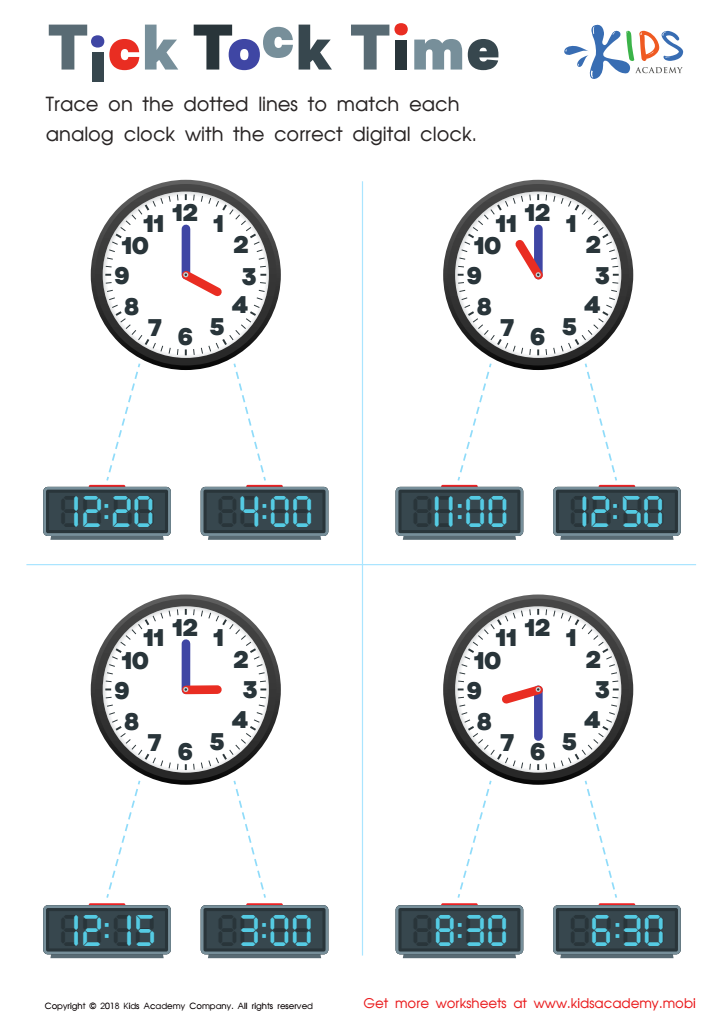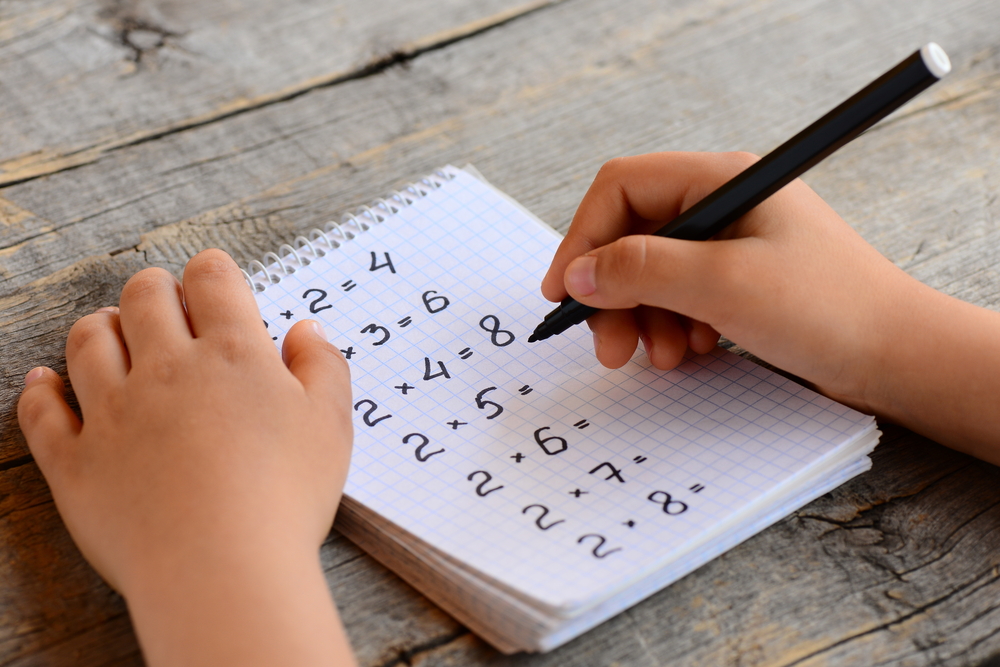Time recognition Time Worksheets for Ages 6-7
3 filtered results
-
From - To
Enhance your child's understanding of time with our engaging Time Recognition Worksheets for ages 6-7. Designed to help young learners grasp essential concepts of telling time, these worksheets offer fun activities that promote skill development through interactive learning. Children will practice reading both digital and analog clocks while exploring scenarios that emphasize real-life applications of time. With colorful designs and age-appropriate challenges, our worksheets make learning enjoyable and effective. Equip your child with the confidence to tell time and understand daily schedules. Explore our resources today and watch your young learner thrive in mastering this crucial life skill!


Tick Tock Time Worksheet


Telling Time by the Half Hour Worksheet


Matching Time Worksheet
Time recognition is a foundational skill for children aged 6-7 that significantly influences their daily lives and overall development. At this age, children begin to grasp the concept of time, which helps them understand routines, schedule their activities, and develop a sense of independence. Parents and teachers should prioritize time recognition for several reasons.
Firstly, it enhances organizational skills. When children learn to read clocks and understand time intervals, they become more adept at managing their daily tasks, such as completing homework on time or preparing for school.
Secondly, understanding time promotes punctuality and responsibility. Children who understand time concepts are likely to value timeliness, an essential trait that carries into adulthood.
Moreover, it nurtures social skills. Time-related activities, such as playdates or extracurricular activities, require coordination with peers, teaching children the importance of being mindful of others' schedules.
Lastly, time recognition is connected deeply to cognitive development. It aids in their understanding of numerical concepts, enhancing mathematical skills. In essence, investing efforts into teaching time recognition not only facilitates everyday functioning but also builds critical skills that impact a child’s academic success and social interactions well into the future.
 Assign to My Students
Assign to My Students



















